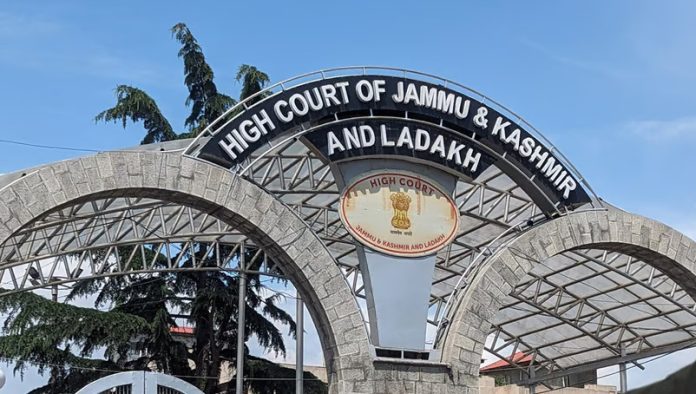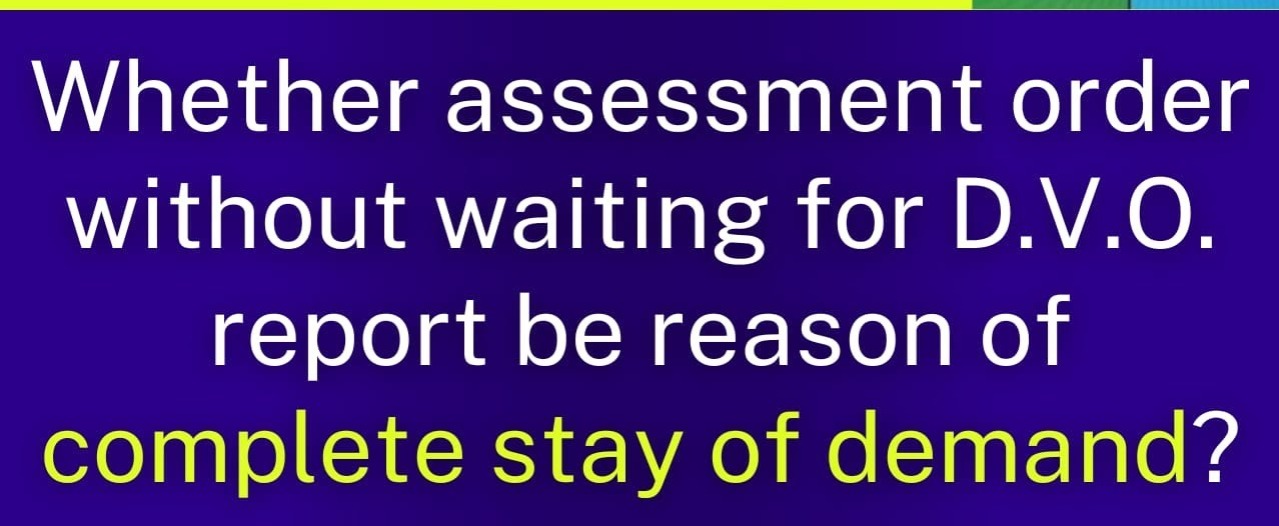@JUDGMENTTAG-ORDER
By the Court
On an application u/s 256(2) of the Income Tax Act, 1961, the following questions set out at page 2 of the paper book are referred by the Tribunal for our opinion.
"1. Whether, on the facts and circumstances of the case, the finding of Tribunal that no clear concealment of income has been established is based on any relevant material or perverse ?
2. Whether, on the facts and in the circumstances of the case and on correct interpretation of the section 271(1)(c) of the Income Tax Act, 1961 read with the Explanation thereof, the Tribunal was justified in holding that no penalty u/s 271(1)(c) of the said Act is eligible in this case ?"
2. The assessee is a firm and the assessment year involved is 1974-75. The assessment for the assessment year 1974-75 was completed on a total income of Rs. 11,79,422 which included addition of Rs. 4,34,360 under the head "income from other sources" and Rs. 1,55,567 in the trading account. The assessing officer initiated a penalty proceeding u/s 271(1)(c) of the Act. After considering the submissions of the assessee, the assessing officer has imposed a penalty of Rs. 4,50,000 u/s 271(1)(c) of the Act.
In appeal before the Commissioner (Appeals), the Commissioner (Appeals) has reduced the penalty amount of Rs. 1,90,000 and allowed relief of Rs. 2,60,000. In appeal before the Tribunal, the Tribunal has cancelled the penalty in toto imposed by the assessing officer.
3. None appeared for the assessee. Heard the learned counsel for the revenue.
4. In the facts and reasons given by the Tribunal, the Tribunal has considered its reasoning in para 5 of its order for ready reference which reads as under :
"We have carefully considered the facts of the case and the arguments advanced by both the parties. We have also gone through the judicial decisions cited by both the parties. We find from the order of the Tribunal for the assessment year 1974-75 relating to the addition of Rs. 4,84,000 against hypothecation of stock of raw materials, stores, finished goods, etc. that the Tribunal has found that the assessee had failed to offer satisfactory explanation regarding discrepancy in the stock as disclosed to the bank. Since the assessee did not maintain any stock register either for the raw materials or for production or for manufacturing formalities the assessment of unexplained purchases are to be assessed separately as income from other sources. However, in view of the order of the Commissioner (Appeals) the addition on account of income from other sources was reduced by Rs. 2,50,000. The Commissioner (Appeals) while considering the assessees arguments and submissions has taken a view that no penalty for concealment can be levied merely on account of additions made in the assessees trading account. As regards Rs. 1,83,360 the Commissioner (Appeals) has taken a view that the issue taken up stood on an entirely different footing. The addition has been made on the basis of unaccepted for purchase of items of stock in respect of which there was clear-cut discrepancy and the Tribunal has also made a finding that the assessee did not maintain any stock register for the material or for production or for manufacturing commodities. Due to above reasons, the Tribunal held that the assessment of unexplained purchases deserved to be assessed separately as income from other sources. He has, therefore, taken a view that penalty on the above amount is leviable and, accordingly, sustained Rs. 1,90,000 as penalty u/s 271(1)(c) of the Income Tax Act. The arguments advanced by the assessees counsel that the business of the assessee was closed when the assessment proceeding was taken up and there was nobody to produce the books of account etc. cannot be considered at this stage. Further, the argument that it is the business practice in the market that the value of the goods has been shown at a higher value for the purpose of hypothecation with the banks than the book value cannot be accepted in absence of any particulars of the quantity of stock hypothecated by the assessee.
As regards the decisions of the various High Courts relied on by the assessees counsel we find that the decisions in
Their Lordships in the said two decisions laid that merely because an assessee agreed to the addition on certain amount and when the department could not adduce any evidence to establish that the assessee had consciously concealed the particulars of his income such admission made by the assessee does not amount to concealment of income. Levy of penalty u/s 271(1)(c) of the Income Tax Act was, therefore, not justified. In the cases relied on by the learned Departmental Representative it has been held on the facts of the cases considered by their Lordships that when the assessee agreed to the inclusion of the amount in the assessment and the assessee did not establish that such amount was not the concealed income, levy of penalty was justified. On careful consideration of the various decisions cited above, we are of the opinion that the assessee deserves to succeed. In the present case, the assessee did not maintain any day-to-day stock or quantitative analysis of raw materials, goods manufactured, etc. The assessee took loan from chartered bank against hypothecation of stocks and furnished statements of stocks such as, raw materials, stores and tools, work-in-progress valued at Rs. 5,70,000. The assessee also submitted to the bank the value or sundry debtors at Rs. ............... As against the above figures the assessee had shown the value of stock etc. at Rs. 1,35,641 in respect of raw materials, stores and tools and work-in-progress, the value of sundry debtors was shown at Rs. 1,21,000. There was, therefore, a discrepancy of Rs. 4,34,389 in appeal the aforesaid discrepancy added back to the total income of the assessee was reduced to Rs. 2,50,000 by the Commissioner (Appeals) which has been upheld by the Tribunal.
The addition sustained was, therefore, on estimate and no clear concealment of income has been established in order to justify levy of penalty for concealment u/s 271(1)(c) of the Income Tax Act as held in a number of decisions cited above. The addition of Rs. 1,84,360 on the ground of unaccounted for purchase of items of stock etc. on the basis of which the Commissioner (Appeals) sustained a penalty of Rs. 1,90,000 also stands in the same footing as the addition of Rs. 2,50,000 sustained by the Tribunal and the Commissioner (Appeals). In view of the above and applying the ratio of the decisions of the various High Courts cited and relied on by the assessees counsel we are of the opinion that the levy of penalty u/s 271(1)(c) of the Income Tax Act is not justified. Accordingly, the appeal is allowed."
5. The penalty u/s 271(1)(c) is not automatic on the basis of addition made or part of the addition sustained in appeal. In assessment, addition can be on the basis of presumption. But in penalty the assessing officer has to establish that there is conscious concealment. This aspect has been considered by the Madras High Court in
"At the hearing, some earlier reported cases were referred to by both sides. We do not, however, think that in any of the earlier cases the questions have been presented in such a fashion as in the present one. We may, however, refer to one decision in
The phraseology of section 28(1)(c) of the Act, 1922 was maintained in section 271(1)(c) of the Act of 1961 also, till it was amended by the Finance Act, 1968. The clause as it existed before the amendment was that penalty leviable was of a sum which shall not be less than 20 per cent but which shall not exceed 1-1/2 times the amount of the tax, if any, which would have been avoided if the income as returned by such person had been accepted as the correct income. Under this clause, which was in pari materia with section 28(1)(c) of the Act of 1922 statute did not impose or lay down a correlation between the tax on concealed income and the penalty for concealment. Let the tax on concealed income be even so little. Yet the penalty can be levied on one and a half times the difference between tax on the assessed income and the tax on the returned income even though much of the add-backs in the assessment are not for under statement of income. u/s 271(1)(iii) as it stood amended by the Finance Act, 1968, two important change came about. In the first place, basis of quantification of penalty was not the tax or a multiple of the tax avoided, but the concealed income itself. Besides, under the provisions as amended Act, 1968 every rupee of penalty must be justified on every rupee of concealment and on no other basis. In this manner, it must be held to have been enacted and as a mere quantification provision, but as constituting the very crux of the penalty liability.
The Tribunal as well as the Inspecting Assistant Commissioner have not understood the requirement of the provision and have proceeded to levy penalty on amounts which are not started to be amounts of income actually concealed.
In the result, questions No. 2 and 3 are answered in favour of the assessee. In view of the answer of ours, we would phrase our answer to the first question thus. While the provision of section 271(1)(c) were attracted up to a point on the facts and in the circumstances of the case, the penalty levied or sustained by the Tribunal cannot be justified merely on the facts which justify the institution of the proceedings u/s 271(1)(c). The justification for actual imposition of penalty must be found u/s 271(1)(iii) of the Act which we have held does not apply to the present case as our answers to the two other questions would establish."
6. The admitted facts are that there was a discrepancy in the figures which the assessee has in its account and the figure of stock given in statement to the bank for the purpose of loan. The assessee has explained just to get more amount from the bank, he has shown higher figures of the stock for hypothecation to the bank. Though the Tribunal has sustained the addition to the tune of Rs. 2,50,000 in the quantum appeal, but penalty u/s 271(1)(c) of the Act cannot be imposed on the sold basis of discrepancy of figure given to bank for taking more loan from bank.
7. We have seen the observation of the Madras High Court, we are in agreement with the view taken by the Madras High Court that in the penalty proceedings the authority in the department should establish that there is conscious concealment by the assessee.
8. The learned counsel for the revenue has not shown any authority wherein any High Court has taken the view that on an explanation given by the assessee for showing higher figure to the bank than the exact figure shown in its account. The penalty has been sustained by the High Court. It is very common that the assessee normally shows some exorbitant figure of stocks to bank to get more amount of loan. In view of these admitted facts, we find no infirmity in the order of the Tribunal.
In the result, we answer the question No. 1 that the finding of the Tribunal is based on relevant materials and the finding is not perverse, that is, we answer the question No. 1 in favour of the assessee and against the revenue.
Question No. 2 also we answer in the affirmative, that is, in favour of the assessee and against the revenue.
The reference application so made, accordingly, stands disposed of.

